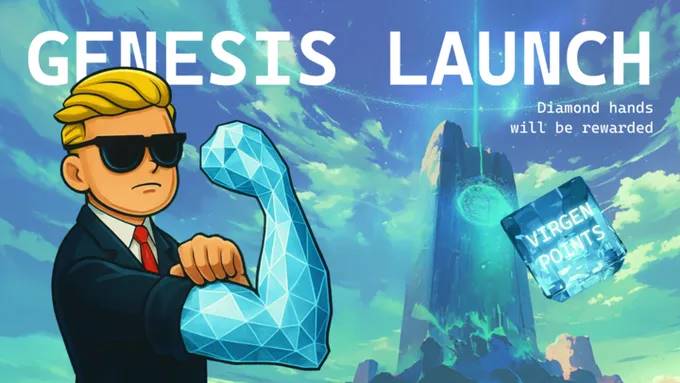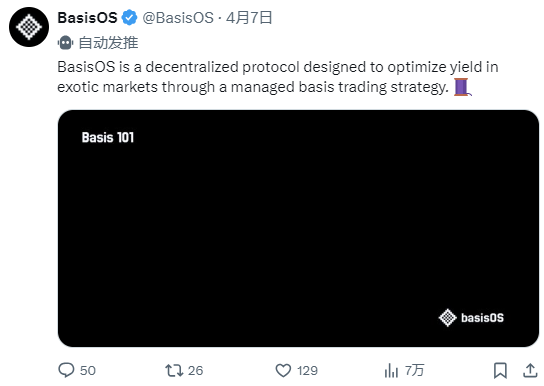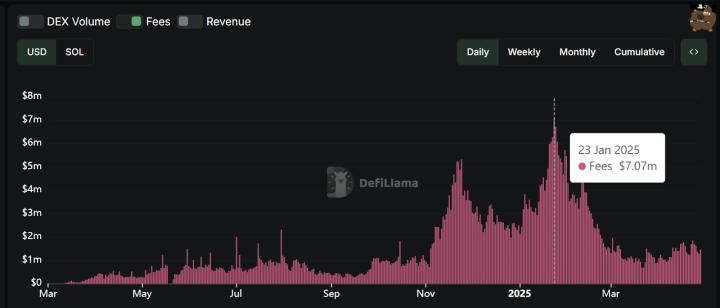>Agent market has been bottoming out (around $4 billion total market cap) for about two and a half weeks, and the market market is now fully entering a bull market led by Virtuals. Yes Yes, this time the protagonist is only Virtuals. The current surge is comparable to the prosperity of October-November last year, when Virtuals first launched the AI Agent tokenization platform, establishing its position as an AI pioneer and providing a top-tier token distribution network for all AI projects willing to have a "fair launch".
1. Fair Launch and Gamified Launch Platform

Genesis Launch has completely changed the market landscape. Former gamblers were blindly following various trash projects or tokens manipulated by small groups on PumpFun, but now they can almost steadily earn 5 to 10 times on each new project launch.
The goal of being fairer than before can be achieved by introducing a "points" system, which can coordinate the interests of different stakeholders. New projects adopt a launch mode with fixed market value and fixed supply, all starting with a benchmark market value of 112,000 VIRTUAL (approximately $200,thousand000dilution). P). Participants can obtain can up to 0.5 VIRTUAL of the total token supply, hold the officially designated top-tier AI Agent tokens, or actively participate in community discussions of the virt.
The recently launched cooling-off period mechanism aims to curb users' selling behavior, which further further enhtheiveness virtGenesis Launchpad, because sellers must think more before selling.
So far, Genesis Launchpad has proven to be very successful withith BasisOS being the most successful project, bringing participants 200 times returns returns. Since then, a large number of short-term traders on the Virtuals platform have captured 5-40 times investment returns.
p>>After the great success of Genesis Launches, capital and market attention have once again converged on the Virtuals ecosystem, raising the valuation levels of almost all AI Agent projects on on the virtuals. >theurgype of quality projects remains one of the biggest challenges facing the Virtuals ecosystem, which leads us the to.
2. Hype and Overrides H2
>
<>
As a trader and speculator, you can profit from investing in products of general quality and sub-optimal teams, thanks to the launch mechanism of Genesis projects. Under this model, the are likelihood of project valuation being hyped from $200,000 far higher than the risk of subsequent price collapse (especially when it is confirmed that there are no insiders or pre-sale rounds).
If you have a unique idea, you can directly issue tokens without an actual landing product. No need of toify user group, verify no market demand, and no need to care about revenue growth and user retention. Just focus on creating creating market heat and launching the project (with a demo is better, but not necessary).
Any project that meets the basic requirements (having a complete documentation, excellent product concept, and good team image) can successfully issue tokens on the virtGenesis> launchpad.
For investors, it is important must be clear to view investing in these new projects as short-term speculative behavior, rather than medium to long-term fundamental investment. Because nine out of ten, these AI projects touted good as good fundamenttrash.
With the emergence of a large number of low-quality projects, the opportunities and gaps for high-quality projects (AI and non-AI) have also expanded, which leads to the third industry trend.
3. Scarcity of High-Quality DeFi on Virtuals Platform

Once this situation occurs, attention will naturally shift to other ecosystems, such as , , , especially low-market-cap projects with obvious fundamental improvements (such as new features, new product launches, new partnerships, etc.).
and are probably the two most high-quality ecosystems currently, and there are also some underestimated potential projects that have not yet exploded (such as 3-4 targets deeply integrated with subnets or focusing on building Bittensor products in the ecosystem, and handshake projects contributing to 's Ryzome network).
Of course, the best investment strategy is to accumulate these tokens in advance before most people realize their value.
6. Limited Investment Opportunities for Institutions in AI Field

Despite the continuous price surge of tokens from important AI Agent ecosystems like Virtuals and AI16Z, many institutional investors can only watch from the sidelines, as these rapidly rising assets are only suitable for small retail investors or high-risk speculators. The liquidity of the related market is extremely scarce, and the LP mechanism has structural vulnerabilities (especially evident on the Virtuals platform).
The lack of appropriate liquidity infrastructure, coupled with the rising interest in decentralized artificial intelligence, is driving institutions to invest in decentralized infrastructure, autonomous intelligent L1 blockchains, decentralized AI laboratories, and other fields, rather than current AI Agent tokens.
What tokens are you curious about?
They include GRASS, TAO (and its subnets), VANA, FLOCK, PROMPT, and a series of tokens not yet issued, such as Nous Research, Pluralis, Prime Intellect, etc. These teams are building a true Web3 AI moat, granting ownership of high-performance models to the general public (rather than centralized AI laboratories). In short, these projects focus on truly complex artificial intelligence technologies that ordinary people find difficult to understand in terms of their operating mechanisms and how to invest, as they represent the most cutting-edge innovations in the decentralized AI field.
How to develop the best investment strategy based on trends?
My strategy is to gradually invest the profits from short-term small AI Agent trades (especially genesis projects collaborating with mediocre teams) into the decentralized artificial intelligence field. AI projects with fundamental value need time to grow, as they are mostly infrastructure-centric and lack consumer-facing products. As we have seen, models like ChatGPT, Grok, and Anthropic have suddenly performed excellently in completing daily tasks, real-time research, programming, etc., and future decentralized Web3 models will ultimately become powerful in executing certain Web2 native and Web3 native tasks.
Does this mean you should heavily invest in decentralized AI infrastructure?
Not necessarily. Success in the crypto field is mainly driven by market hype and marketing strategies. Whether a project can succeed long-term is 90% marketing and 10% model design. The key to success lies in: creating products that meet market demand, providing a smooth user interface and experience, developing and precisely executing a comprehensive launch plan, designing a sustainable token economic model, and planning effective user growth and retention strategies. These elements together constitute a winning marketing system.
My core investment philosophy has always been to bet on teams that understand how to combine marketing channels with technology. This logic is similar to the strategy of venture capital firms investing in vertical SaaS companies during the Web2 era, which focus on solutions for specific scenarios, even though they may use generic base models behind the scenes, but combined with their own proprietary data.
I believe this view will be very enduring in the medium to short term, especially in the Web3 field, because everything is driven by hype and community, and things that are easy to understand will be easier to promote.
The trading structure of the crypto market is also moving in this direction, with fair launch models gradually becoming the market norm. Meanwhile, more teams from other ecosystems are beginning to more deeply integrate the two dimensions of technology and market. They invest more time in establishing technical collaborations with infrastructure projects while focusing on marketing and market entry strategies to convert market enthusiasm into attention to actual artificial intelligence technologies.
Quick Summary
Virtuals' Genesis Launch model has achieved both market attention and return rates.
Hype still outweighs fundamentals, mostly for short-term operations.
DeFi projects with solid fundamentals are discovering growth potential through the Virtuals ecosystem.
Creators' income from trading volume is triggering a new wave of experimentation.
The Virtuals ecosystem currently leads, but other alternative ecosystems may soon gain market attention and attract investment.
Institutional investors remain cautious, more inclined to invest in decentralized AI infrastructure rather than AI Agent tokens.







